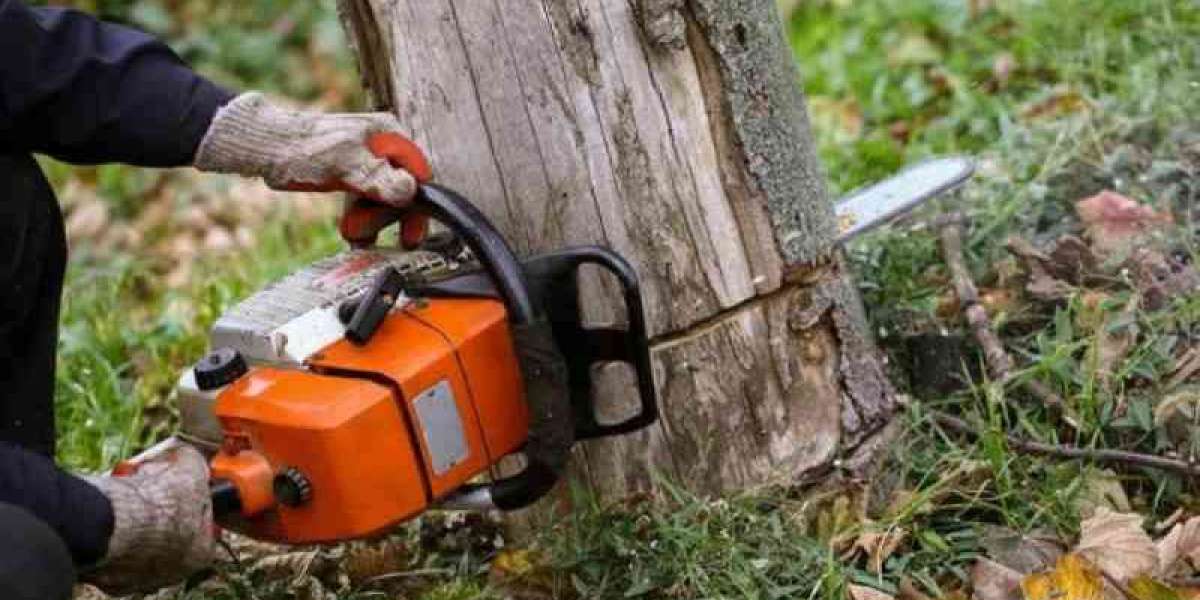Tree removal might not be the most glamorous home improvement project, but it can be one of the most important. Whether it's for safety, aesthetics, or construction planning—sometimes a tree has just got to go.
What Is Tree Removal?
Tree removal is the process of safely cutting down and taking away a tree from your property. It’s not as simple as grabbing a saw—this process involves precision, equipment, and sometimes permits.
Why Tree Removal Is Sometimes Necessary
You might love that big old oak in the yard, but if it’s decaying or leaning toward your house, it can quickly go from a shady friend to a massive liability. Tree removal is often done to:
Prevent property damage
Clear space for new structures
Eliminate safety hazards
Stop the spread of disease
Signs a Tree Needs to Be Removed
Dead or Dying Tree
If your tree has brittle branches, peeling bark, and no leaves in the growing season, it's likely dead. Dead trees are time bombs—they’ll fall eventually.
Structural Instability
Cracks in the trunk or major limbs? Leaning severely to one side? These are signs your tree could collapse in a storm—or even on a calm day.
Tree Disease or Infestation
Fungi, oozing sap, or bug infestations can eat away at a tree from the inside out. Once decay sets in, it's hard to reverse.
Property Damage or Obstruction
Trees growing too close to homes, power lines, or driveways pose real hazards. Don’t wait for a windstorm to make the decision for you.
Root Problems and Sidewalk Lifting
Tree roots can damage foundations, lift sidewalks, and invade plumbing. These issues often require full removal of the offending tree.
Dangers of Neglecting Hazardous Trees
Ignoring a sick or unstable tree can lead to:
Safety Risks
Falling branches or full tree collapse can result in injury—or worse.
Legal and Insurance Issues
If your neglected tree damages a neighbor’s property, you could be held liable. And insurance may not cover you if you ignored clear signs of danger.
Tree Removal Process Explained
So what does removal actually involve?
Site Assessment and Planning
Professionals inspect the tree, evaluate risks, and plan the safest removal method.
Equipment and Safety Gear
Think chainsaws, ropes, cranes, and safety harnesses—not just a handsaw.
Cutting and Sectioning
Trees are often removed in sections, especially in tight spaces. The top is cut first, then branches, then the trunk.
Limb and Trunk Removal
Cut sections are lowered carefully and hauled away, often using cranes or pulleys.
Stump Removal or Grinding
The base of the tree is either dug out or ground down to prevent regrowth and tripping hazards.
DIY Tree Removal: Is It Worth the Risk?
Pros and Cons of DIY
Pros: You might save a few bucks.
Cons: You could fall, get crushed, or mess up your yard (or your neighbor’s). Tree removal is dangerous without training.
When to Call a Professional
Tree is over 15 feet tall
Near buildings or power lines
Diseased or unstable
You lack proper equipment
Just call a pro—it’s not worth the ER visit.
Hiring a Tree Removal Service
Here’s what to check before hiring:
What to Look for in a Tree Service Company
Licensed and insured
Certified arborists on staff
Modern equipment
Good online reviews
Importance of Insurance and Certification
Without insurance, you’re liable for any damage or injury. Always ask to see proof.
Questions to Ask Before Hiring
Can you provide references?
Is stump removal included?
How long will the job take?
Do I need a permit?
Cost of Tree Removal
Factors That Influence Cost
Tree height and width
Tree species (hardwoods are tougher)
Location and accessibility
Urgency (emergency jobs cost more)
Average Pricing by Tree Size
Small trees (<30 ft): $150–$500
Medium trees (30–60 ft): $500–$900
Large trees (60+ ft): $1,000+
Additional Costs
Stump grinding: $75–$300
Emergency removal: $200–$1,500 more
Debris haul-away: Sometimes extra
Legal Considerations
Permits and Regulations
Some cities require permits for tree removal, especially on public or heritage trees. Always check with your city or HOA.
Protected Trees and Local Ordinances
Cutting down a protected species could lead to fines. Get clearance first.
Environmental Impact and Responsible Disposal
Reusing Tree Wood
Cut logs can be turned into firewood, mulch, or even furniture.
Eco-Friendly Disposal Options
Look for companies that recycle wood or donate it to local community programs.
Alternatives to Tree Removal
If you’re on the fence about removal, consider these options:
Cabling and Bracing
These techniques stabilize weak trees without cutting them down.
Disease Treatment
An arborist might be able to save a sick tree with fungicides or pruning.
Selective Pruning
Removing just the dangerous branches can reduce risk without total removal.
Stump Grinding vs. Stump Removal
Stump Grinding
Fast, affordable, and leaves the roots underground. Great for lawn-friendly finishes.
Stump Removal
More labor-intensive. Involves digging up the entire root system. Best when replanting or building over the spot.
Best Seasons for Tree Removal
Late winter or early spring is ideal. Trees are dormant, leaves are gone, and the ground is more solid—making removal easier and cheaper.
Tree Removal Myths Busted
“All tree removal is bad for the environment.”
Not if it's diseased or invasive. Sometimes, it's actually the responsible thing to do.
“Tree removal is always expensive.”
Not true! Costs vary and maintenance can prevent high future costs.
“Any handyman can do it.”
Nope. You need a certified arborist for safety and legal reasons.
Conclusion
Tree removal isn’t just about chopping wood—it’s about protecting people, property, and sometimes even other trees. Whether you need to remove a tree for safety, landscaping, or construction, always plan carefully and consider hiring professionals. The risks are real, but the rewards of a safer, cleaner yard are well worth it.
FAQs
1. Is tree removal covered by homeowners insurance?
Sometimes—if the tree falls due to a covered peril like a storm. Check your policy.
2. Can I remove a tree close to power lines?
Never attempt this yourself. Always call your utility company and a certified arborist.
3. How long does it take to remove a tree?
Anywhere from a few hours to a full day, depending on size and complexity.
4. Do I need permission to cut down a tree on my property?
Maybe. Local laws vary, and some trees are protected. Always check with your city or county first.
5. What happens to the wood after tree removal?
That depends. Some companies haul it away, others leave it stacked. Ask ahead of time.



